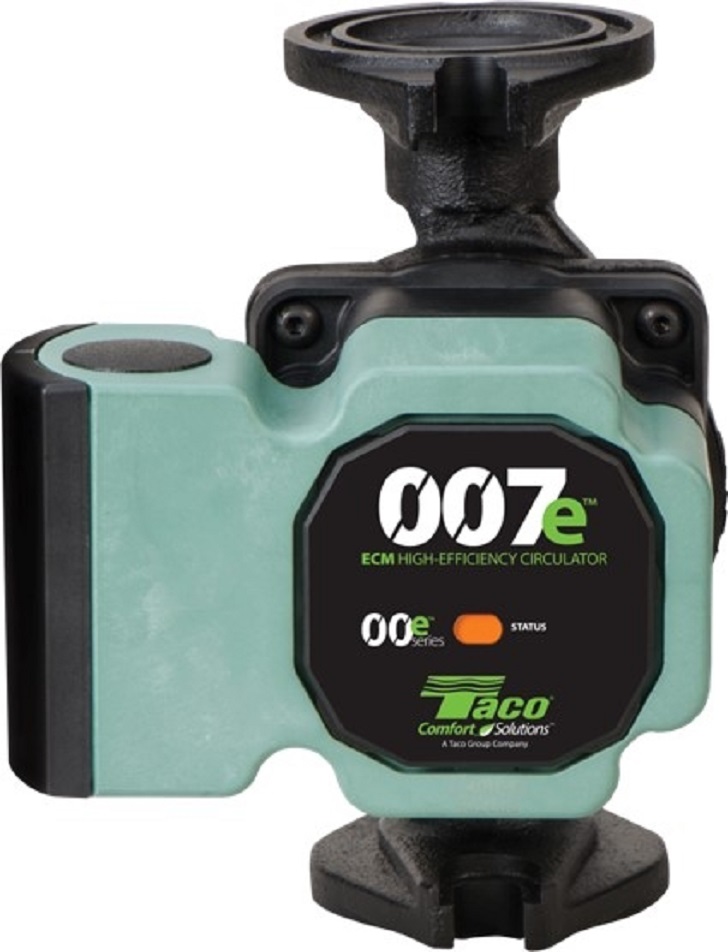
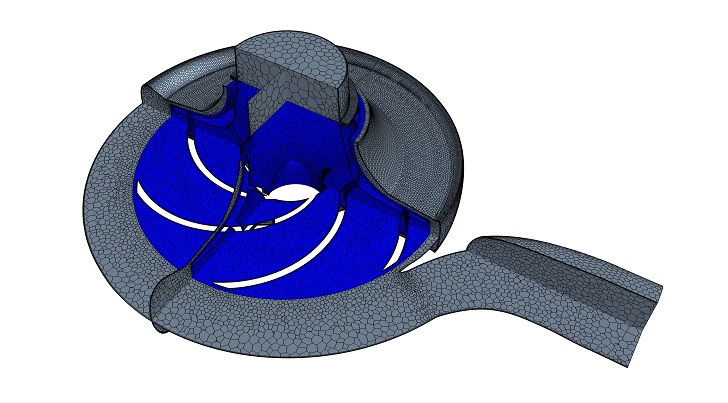
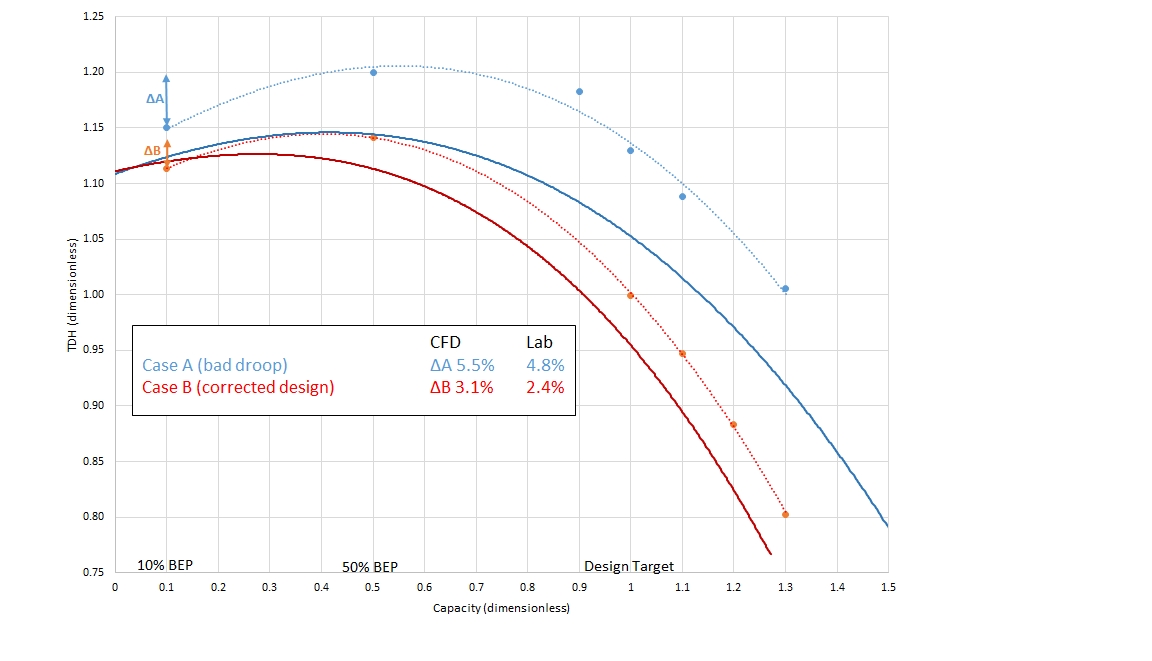
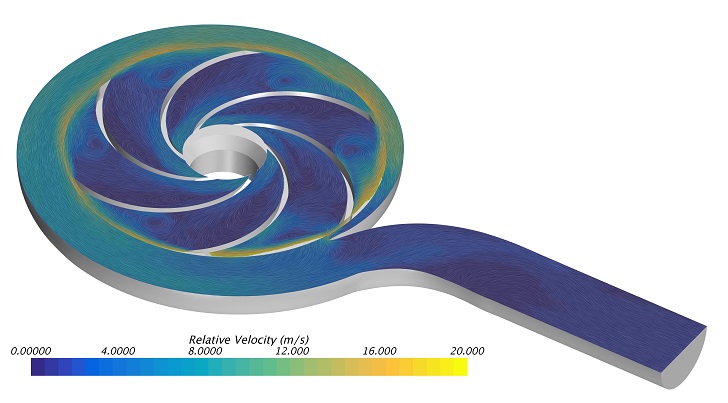
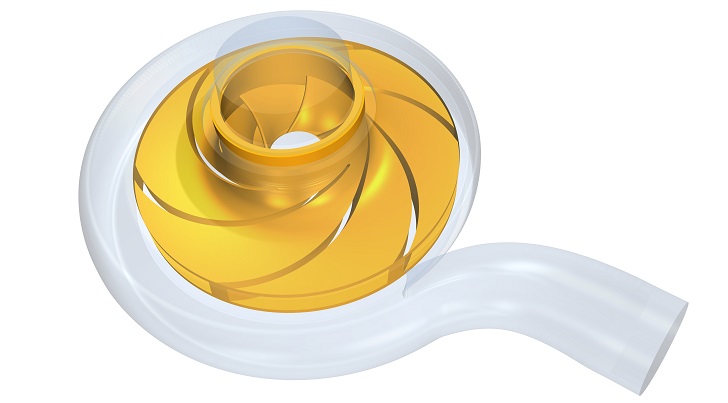
Traditional pump design methods have relied heavily on testing physical prototypes, which can be expensive and time consuming. Creating a virtual prototype enables rapid investigation of multiple pump designs over a range of possible operating conditions, which speeds up the design process and reduces costs.
Pumps are the unsung heroes of many aspects of our lives. They enable our water and sewage systems; ventilation systems; cooling in energy plants; and many more applications. Pump design engineers face multiple challenges when creating new, better products. Pumps have to operate well over a range of conditions, meet government efficiency regulations, and run reliably over long lifetimes with minimal downtime for repairs.
Taco Comfort Solutions is an ISO 9001 manufacturer of heating and cooling equipment, accessories and systems. Their water-based hydronic heating and cooling systems are energy efficient and comfortable. As part of their commitment to sustainability, many of Taco's products require fewer components and less material to build, as well as less energy to operate. Taco manufactures a wide range of pumps and valves used in both residential and commercial spaces.
All pump manufacturers need to meet more stringent government legislated efficiency requirements by 2020. As part of their drive to meet these requirements, Taco use STAR-CCM+ software from Siemens PLM Software in their design process. STAR-CCM+ enables them to create a digital prototype of their design and simulate the three-dimensional flow in the pump using computational fluid dynamics (CFD).
Design and simulation Taco use STAR-CCM+ as a “virtual lab” prior to creating and testing physical prototypes. Peter Vandal leads Taco’s CFD design operations as a product engineer. After importing the geometry from SolidWorks, all of the meshing, simulation and analysis is then performed in STAR-CCM+, as shown in Figure 2. For each pump design, the CFD simulation gives a full, three-dimensional representation of the flow and pressures within the pump housing. “We can take readings at any point in the model, like virtual probes” explains Peter. “For example, we can pull out the static pressure or total pressure values at the same points as the probes used in the lab testing, so we can directly compare the STAR-CCM+ results with the real-world application.” This validation of the CFD model gives the team a high level of confidence in the CFD results, along with the predictive insight into performance characteristics such as head, efficiency and BEP flow rate.
Once Peter and his team have three or four designs which yield acceptable performance in STAR-CCM+, they move on to building and testing their physical prototypes. Even with their ability to rapidly prototype (via 3D-printing) the stereolithography (SLA) impellers, each one costs up to $2500 to build and test. Exploring the performance of numerous digital prototypes in STAR-CCM+ brings significant cost and time savings to Taco.
Simulating the complete pump curve Peter and his team run steady state simulations on each design, testing multiple flow points to establish the Best Efficiency Point (BEP) flow rate. In an ideal world, pumps would always run near the BEP but this is not always the case. To prevent field problems and meet customer needs it is important to look at off-design flow to be sure the pump will be robust over the complete operating curve. Peter describes three distinct sections: “On the left hand side of the pump curve you can get an excessive droop, which is not acceptable. The BEP lies in the centre and on the right hand side you need to examine the operating conditions at high flow rates.” Taco performs unsteady simulations in STAR-CCM+, aiming to examine the entire pump curve. “We initialize the CFD model with a steady state run at BEP flow rate, and then change the boundary conditions so the flow changes towards the extreme flow rate.”
Peter shared one example of a case which showed an underperforming design on the left hand side of the performance curve (Figure 3): “At off design flow rates the pump flow can become highly unsteady (Figure 4). If there is too much drop in pressure on the left hand side of the pump curve there could be problems with operating a parallel pumping setup. I was able to run an unsteady simulation in STAR-CCM+ at 10% and 50% of the BEP flow rate (GPM), to quantify the amount of droop between the maximum head point (50%) and near shut-off head (10%). I used the same method to simulate alternative designs before we built the SLA impellers for lab testing. The designs which went forward for testing were those which showed good results not only at BEP but also at low flow rate, with a smaller drop in pressure on the left side of the performance curve.”
Streamlining workflows Using STAR-CCM+ for virtual testing has sped up Taco’s design workflow and reduced the costs associated with physical testing. As Peter comments, “When I think back a few years to the first pumps I worked on, we would order parts for testing, they would be bad and we would have to do the whole design, ordering, and testing process again. Now [that] we are using STAR-CCM+ we are cutting out this iterative ‘start over’ process and speeding up the complete design cycle”. Peter notes how their use of the software has improved over recent years. “When we first started using STAR-CCM+ we did not have much lab test data to correlate with the CFD results, so we did not know the best model settings (such as roughness, or leakage flows) to use. We now have a library of lab test data which validates the STAR-CCM+ results, and know the best model settings to use to get accurate results”.
Peter and his team have worked closely with their Siemens Dedicated Support Engineer (DSE) to streamline their simulations. “It’s great having a dedicated contact at Siemens who knows our processes and works with us to find solutions” explains Peter. Taco worked together with their DSE to develop a quick multi-design testing process, using STAR-CCM+’s part-swapping capability. Once the model has been set up and run in STAR-CCM+, part-swapping enables Peter to replace just the impeller or volute with an alternative design, while the CFD model settings and boundary conditions remain unchanged, as in Figure 5. STAR-CCM+ then rapidly regenerates the mesh, and computes a new solution. “We use a standardized naming convention in SolidWorks, so when I want to change one part in the STAR-CCM+ model I literally hit the replace part button and run a new simulation. We love working this way, as we can test multiple cases one after the other using the same mesh and simulation settings. This not only makes it quick to run multiple simulations, but also gives us confidence that the results will be consistent and repeatable.” Taco has also created Java macros to automate the “mesh and run” process, enabling pump curves to be generated automatically.
Peter explains: “Essentially, we want to eliminate the feedback loop between lab testing and the design stage, so that each pump design has as few lab tests as possible. We want to ‘explore digitally and confirm physically’ rather than the other way around. Given the library of SLA lab test data we now have, using both SLA and metal parts, and the confidence we have in the STAR-CCM+ data we have generated so far, I want to aim for a future where we no longer use SLA testing but go straight from STAR-CCM+ to metal impeller testing.”
Author: Elspeth Mosedale, Siemens PLM Software




